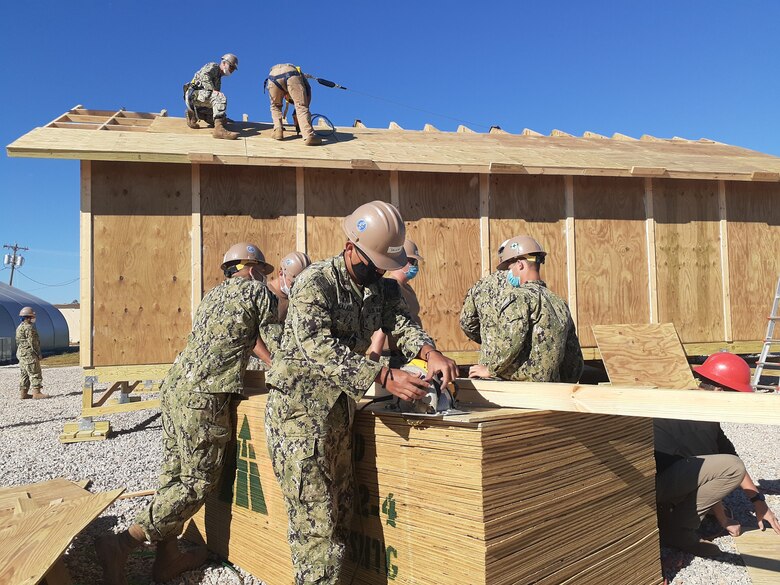A construction project designed to test the energy efficiency of barracks huts, or B-Huts, could ultimately result in saving lives.
The 823rd Air Force Rapid Engineer Deployable Heavy Operational Repair Squadron Engineer, known as RED HORSE, and the Naval Mobile Construction Battalion Eleven Seabees unit, built two B-Huts at the Energy METER Test Site at Tyndall Air Force Base as part of an Air Force Civil Engineer Center Laboratory energy assurance experiment.
Although the huts began as identical structures, one hut will serve as a baseline while the other will be the "new generation," equipped with a full electrical package and provisions for heating, ventilation and air-conditioning systems.
B-Huts, commonly used by the U.S. military at temporary locations worldwide, typically aren't energy efficient, said Reza Salavani, AFCEC Airbase Technologies Energy Program manager.
"These structures will be used as a starting point to explore and innovate energy technologies that will improve the energy efficiency of rigid wall shelters," Salavani said.
"We're going to implement a lot of energy efficiencies, such as solar panels and very high-end insulation," said Heather Luckarift, AFCEC Lab Airbase Technologies Research lead. "We did some proof of concepts where we were able to run these buildings without a generator, and we want to prove that concept on these buildings."
While the Defense Department prioritizes energy efficiency, it's also important when it comes to the safety of U.S. military personnel in hostile environments. There is a high rate of casualties associated with refueling convoys transporting fuel, which is needed to sustain B-Hut operation.
Following the U.S. military's last major conflict, a 2009 Army Environmental Policy Institute report calculated that U.S. forces sustained one casualty for every 24 fuel resupply convoys in Afghanistan, and one U.S. casualty for every 39 fuel resupply convoys in Iraq.
"If these buildings are better insulated, you need less cooling and heating, you need less power, you need less fuel," Salvani said.
Less fuel for the huts equates to more fuel directed to aircraft and flightline missions, and less fuel convoys, he said.
"At the end of the day, it's a human life that you're saving," Salvani said.

Air Force RED HORSE and Navy Seabee crews joined together to construct barracks huts, or B-Huts, at Tyndall Air Force Base, Fla., Nov. 20, 2020. Although the two huts began as identical structures, one hut will serve as a baseline for energy efficiency testing while the other will be the "new generation," equipped with a full electrical package and provisions for heating, ventilation and air conditioning systems. The Air Force Civil Engineer Center's Airbase Technologies Branch is focused on finding ways to improve energy efficiency. (U.S. Air Force photo by Brian Goddin)

Air Force RED HORSE and Navy Seabee crews joined together to construct barracks huts, or B-Huts, at Tyndall Air Force Base, Fla., Nov. 20, 2020. Although the two huts began as identical structures, one hut will serve as a baseline for energy efficiency testing while the other will be the "new generation," equipped with a full electrical package and provisions for heating, ventilation and air conditioning systems. The Air Force Civil Engineer Center's Airbase Technologies Branch is focused on finding ways to improve energy efficiency. (U.S. Air Force photo by Brian Goddin)






